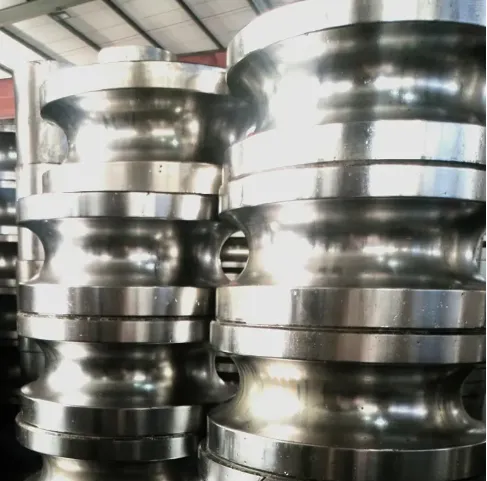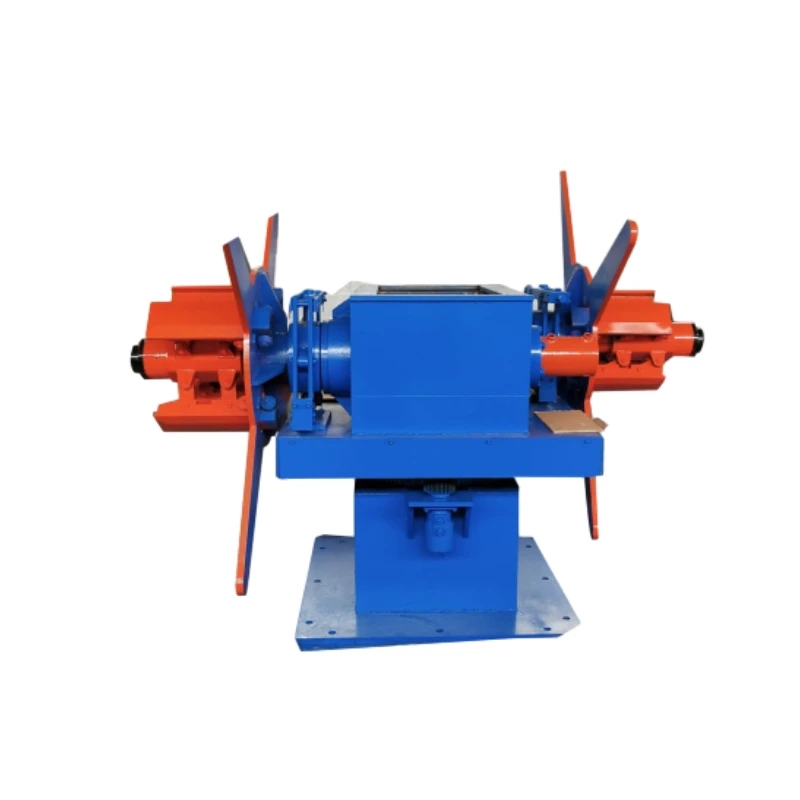Shear Baler for Sale - High-Efficiency Metal Recycling & Baling Solutions
- Understanding Shear Baler Technology and Market Impact
- Engineering Advantages: What Sets Modern Shear Balers Apart
- Manufacturer Comparison: Technical Specifications Breakdown
- Customization Options for Specific Operational Needs
- Industry Application Case Studies and Performance Data
- Procurement Guidelines: Evaluating Shear Baler Suppliers
- Maximizing ROI with Strategic Shear Baler Implementation

(shear baler)
The Critical Role of Shear Baler Technology in Scrap Processing
Shear balers represent essential equipment for metal recycling facilities globally, with the market projected to reach $1.2 billion by 2028 according to recent industry analyses. These machines process ferrous and non-ferrous scrap with remarkable efficiency – an advanced hydraulic shear baler
can reduce scrap volume by 12:1 while processing 30-50 tons of material hourly. Operators report 45% reduction in transportation costs and 60% decrease in storage requirements after implementing modern shear baler systems. For recyclers handling mixed metals, the continuous-cycle processing capability has proven particularly valuable, enabling 24-hour operations with only minimal personnel requirements. This technology directly addresses labor shortages while significantly increasing throughput metrics across scrap yards of all sizes.
Engineering Innovations Driving Shear Baler Performance
Contemporary shear balers incorporate multiple proprietary technologies that enhance productivity. The latest hydraulic systems generate compression forces exceeding 2,500 tons with force management systems that maintain consistent pressure throughout the ram stroke. Unlike basic balers, modern designs include programmable logic controllers (PLCs) that automatically adjust compression cycles based on material density, optimizing energy consumption by 18-22% compared to older models. Dual-pump hydraulic configurations provide both rapid cycling (up to 20 cycles/hour) and power-on-demand functionality. Additional advancements include hardened steel blades with tungsten-carbide coating that triple blade lifespan to approximately 1,800 operational hours, and vibration-dampening frames that reduce structural stress by 40%. These engineering improvements directly translate to 95% operational uptime and reduced maintenance requirements for demanding recycling operations.
Technical Specification Comparison of Industrial Shear Balers
| Manufacturer | Model | Shear Force (tons) | Bale Weight (kg) | Throughput (tph) | Power (kW) | Feed Opening (mm) |
|---|---|---|---|---|---|---|
| Harris Equipment | HRS-2000 | 2,200 | 1,200 | 38-42 | 110 | 2,050x1,800 |
| Marel Machinery | MSB-85 | 1,850 | 950 | 28-32 | 92 | 1,900x1,600 |
| Metso Recycling | BalerPro S6 | 3,100 | 1,650 | 50-55 | 160 | 2,400x2,100 |
| DANIELI HENSCHEL | UltraShear | 2,800 | 1,400 | 46-48 | 135 | 2,200x1,950 |
Customized Shear Baler Solutions for Diverse Applications
Leading manufacturers now provide extensive customization to address specific operational challenges. Feed openings can be expanded to accommodate oversized scrap pieces up to 20-foot beams without preprocessing. For aluminum-intensive operations, specialized tooling reduces oxidation during compression while integrated weighing systems ensure precise lot measurements (±0.5% accuracy). Facilities with space constraints can opt for side-eject configurations that reduce floor space requirements by 40% compared to traditional rear-eject designs. Additional options include explosion-proof hydraulic systems for combustible dust environments, remote monitoring packages with IoT connectivity that predict maintenance needs with 92% accuracy, and water-cooling systems for continuous processing in high-temperature regions. Custom fabrication services ensure structural modifications precisely match operational workflow requirements without compromising safety margins.
Documented Performance Gains in Industrial Applications
Steel service centers have demonstrated measurable productivity gains after installing advanced shear balers. One Midwest processor reduced preparation time for shredded scrap shipments by 75% while achieving 28% denser bales that maximized transportation efficiency. In shipbreaking applications, specialized high-capacity balers process over 600 tons of structural steel daily, with onboard shearing functions eliminating secondary processing steps. Automobile recyclers report complete processing of 100-120 vehicles daily using single shear baler systems, generating bales meeting foundry specifications without additional fragmentation. One European metal yard documented a 19-month ROI after replacing three older machines with one modern 3,100-ton shear baler that operated with 30% less energy consumption while increasing throughput by 140 tons daily. These documented cases underscore how proper equipment selection impacts operational economics.
Procurement Strategies for Industrial Recycling Equipment
Selecting optimal shear balers requires methodical evaluation of several technical factors. Experienced operators prioritize hydraulic system specifications, particularly accumulator capacity versus cycle time ratios – systems should maintain at least 85% of peak pressure throughout the compression stroke. Structural integrity merits careful examination, with welded frames preferred over bolted assemblies for heavy-duty applications. Feed opening dimensions must accommodate the maximum material size processed without compromise. Maintenance considerations should include component accessibility – designs allowing blade replacement in under 3 hours significantly reduce downtime. Additionally, prospective buyers must verify third-party safety certifications like CE or ANSI compliance, examine available service networks within their operating region, and demand performance guarantees covering hydraulic systems for at least two years of heavy-duty operation.
Maximizing Operational Value with Shear Baler Implementation
Choosing the appropriate shear baler fundamentally transforms scrap processing economics. Facilities conducting comprehensive material analysis before selecting equipment achieve the highest efficiency gains – operators processing light gauge material typically benefit more from faster cycling speeds, while heavy demolition scrap handlers prioritize maximum shear force capabilities. Strategic implementation considers how bale specifications integrate with transportation logistics and customer requirements. The highest performing operations utilize data analytics from modern shear balers for continual process optimization, with many achieving 25-30% greater annual throughput within two years of implementation. As metal recycling increasingly emphasizes carbon footprint reduction, advanced electric/hydraulic hybrid systems demonstrate potential for 40% lower emissions without compromising productivity. Properly specified and maintained equipment delivers consistent returns for over 15 years, providing significant competitive advantages in global scrap markets.

(shear baler)
FAQS on shear baler
Q: What is a shear baler used for?
A: A shear baler is designed to compress and bundle materials like metal, plastic, or waste into compact bales. It uses shear blades to cut and shape materials, making them easier to transport and recycle. This machine is ideal for industrial recycling and scrap processing.
Q: Where can I find a reliable shear baler for sale?
A: Reliable shear balers for sale are available through industrial machinery suppliers, specialized recycling equipment dealers, or online marketplaces like eBay. Ensure the seller provides warranties and technical support for optimal purchase confidence.
Q: How does a shear baler differ from a standard baler?
A: Unlike standard balers, shear balers integrate cutting blades to shear materials before compression, enabling efficient processing of bulky or irregular items. This makes them better suited for heavy-duty scrap metal or rigid waste applications.
Q: What safety features should a shear baler machine have?
A: A quality shear baler should include emergency stop buttons, safety guards, and overload protection. Automated locking mechanisms and safety sensors are also critical to prevent accidents during operation.
Q: What maintenance does a shear baler require?
A: Regular maintenance includes lubricating moving parts, inspecting shear blades for wear, and checking hydraulic systems for leaks. Scheduled servicing every 500-1,000 operational hours ensures longevity and peak performance.
-
High-Efficiency Automatic Belling Machine for PipesNewsAug.26,2025
-
High-Quality Line Pipe Steel for Oil & Gas PipelinesNewsAug.21,2025
-
Advanced PVC Belling Machine for Efficient Pipe ProductionNewsAug.19,2025
-
High-Frequency Straight Seam Welded Pipe Production Line-BzZhou Xinghua Machinery Equipment Manufacturing Co., Ltd.|Steel Pipe Manufacturing, Precision EngineeringNewsAug.18,2025
-
High Quality Enamel/Pre-seasoned Camping Square Cast Iron Grill Pan-BzZhou Xinghua Machinery Equipment Manufacturing Co., LTD.NewsAug.18,2025
-
High Quality Enamel/Pre-seasoned Camping Square Enamel Cast Iron Grill Steak Pan - BzZhou Xinghua Machinery Equipment Manufacturing Co., LTD.NewsAug.18,2025


